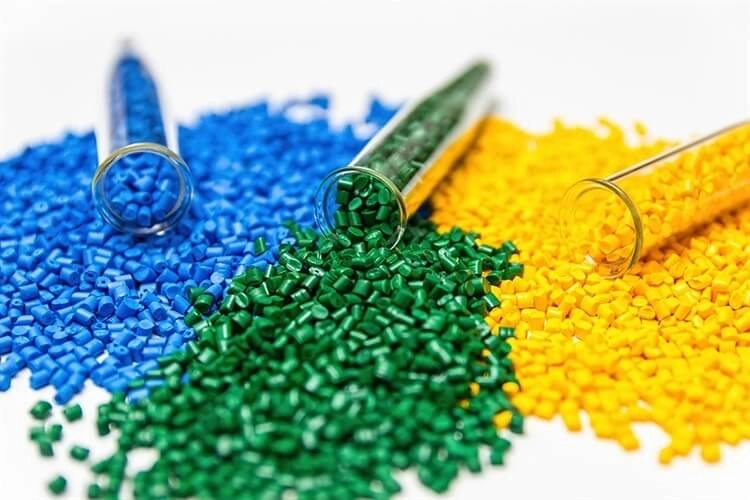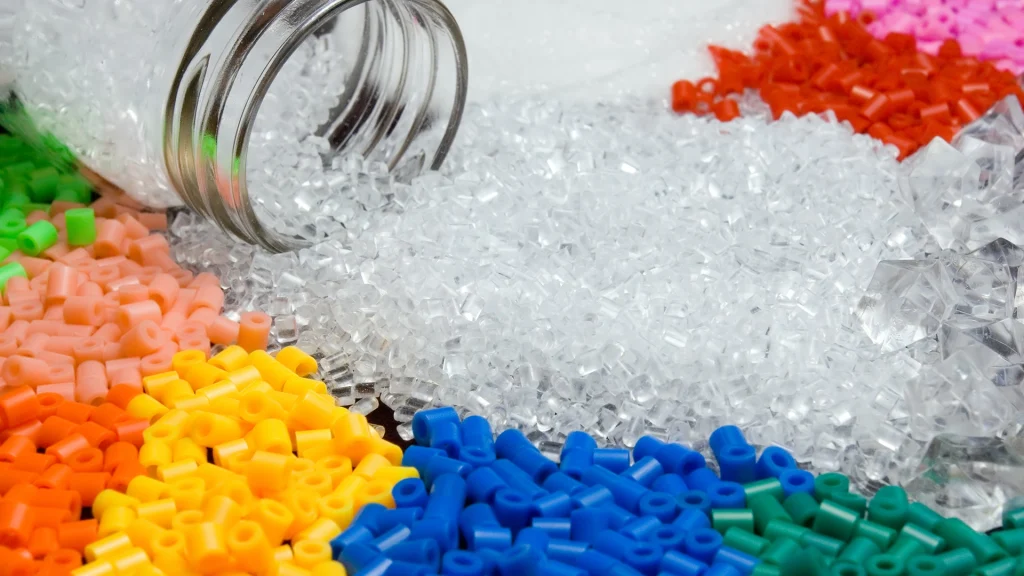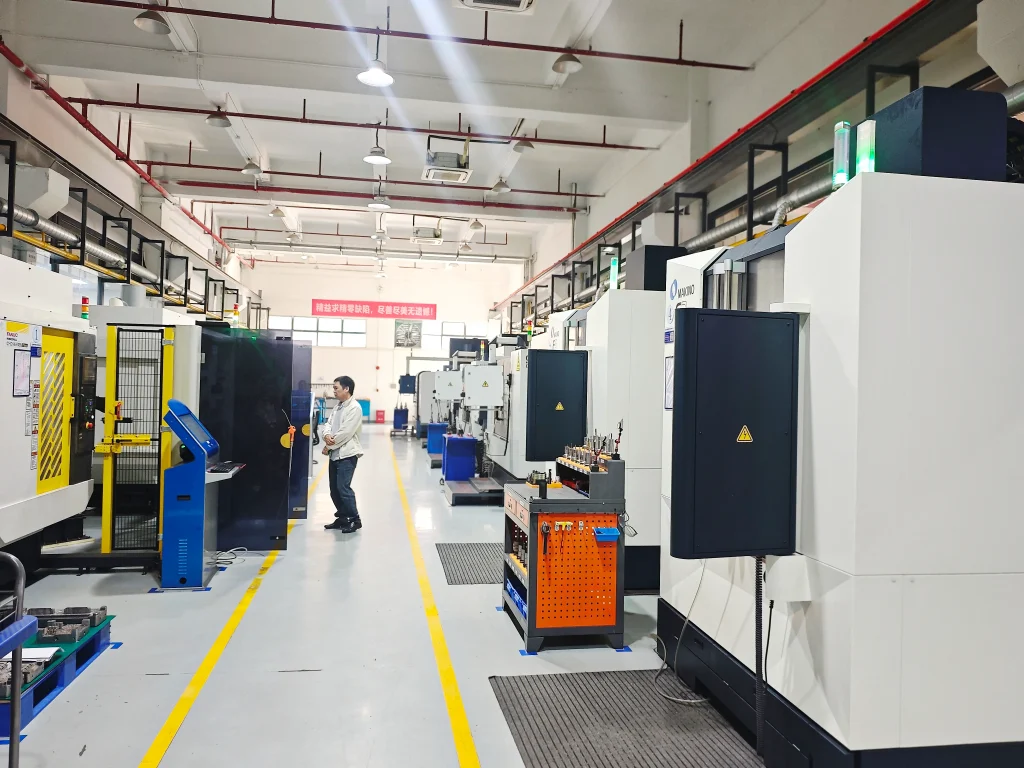Glass Transition Temperature of Polymers
What is Glass Transition Temperature (Tg)?
The glass transition temperature (Tg) is a super important feature of polymers. It shows the temperature where an amorphous polymer changes. It goes from hard and stiff to soft and bendy. This change isn’t about melting crystals. It’s about how polymer chains move. Below Tg, the chains are stuck, like they’re frozen. This makes the material tough. Above Tg, the chains wiggle more. This makes it flexible and stretchy.
Knowing Tg helps figure out how materials work in different jobs. For example, polymers with low Tg might bend or break in warm places. But those with high Tg can handle hot conditions. They stay strong and keep their shape.

Amorphous vs. Semi-crystalline Polymers
Polymers come in two main types: amorphous and semi-crystalline. This depends on how their chains are arranged. Amorphous polymers have no neat crystal structure. Their chains are all jumbled up. These show a clear Tg but no sharp melting point. Examples are polystyrene and polycarbonate.
Semi-crystalline polymers have both tidy crystal areas and messy amorphous ones. They have a Tg for their amorphous parts. They also have a melting point for their crystal parts. High-density polyethylene (HDPE) is semi-crystalline. It has great water resistance and toughness. HDPE injection molding uses this plastic. It’s cheap, strong, and resists bumps well.
The mix of crystal and amorphous parts affects how stiff, tough, or heat-resistant a polymer is.
Polymer Structure
A polymer’s structure shapes how it acts in different situations. Polymers are made of long chains. These chains are built from repeating small units called monomers. They’re linked by strong bonds. The way chains are set up—straight, branched, or connected—changes the material’s traits.
Straight polymers have neat chains. They pack tightly, often making more crystals. Branched polymers have side arms. These mess up packing, reducing crystals and adding bendiness. Connected polymers form 3D webs. These give stiffness and resist bending.
The chemical makeup of monomers also sets traits like chemical resistance or heat stability. Injection-molded HDPE fights off many chemicals, like strong acids and bases. This makes it great for tough jobs where lasting matters.
Long Molecular Chains
Polymers stand out because of their long chains. These make them different from small compounds. Long chains give polymers their special stretchy behavior. Below Tg, chains don’t move much. There’s not enough energy for them to shift.
When it gets warmer, past Tg or near the melting point in semi-crystalline polymers, chains start moving. For HDPE, the melt temperature is 246 to 280°C. This change lets polymers work in processes like injection molding. Controlling chain movement ensures top-quality products.
Longer chains also boost pull strength. More forces hold the chain together. HDPE isn’t as strong as fancy plastics. But it has good pull strength. Longer chains can make processing trickier, though. They increase stickiness.
Polymer Morphology
Polymer morphology is about how chains are arranged in a material. It includes things like crystal levels, how amorphous and crystal areas spread, and how molecules align during making.
In amorphous polymers like polycarbonate, sharp corners are hard to mold. So, add curves during design. Use radii at least 25% of wall thickness. This spreads stress better and helps melt flow.
Advantages and Disadvantages of Polymers Related to Tg

The glass transition temperature (Tg) is a key trait of polymers. It affects how they work and where they’re used. Polymers have good and bad points tied to their Tg. These impact their use in many fields.
Advantages
- Many Uses: Polymers with different Tg values are super flexible. Low-Tg amorphous polymers are bendy. They’re great for stretchy jobs. High-Tg ones are stiff. They fit structural parts well.
- Heat Resistance: High-Tg polymers handle hot places without bending. They’re key in cars and planes where heat resistance matters.
- Strong Mechanics: Below Tg, polymers are super strong. Their chains don’t move much. This stiffness is great for parts that carry weight.
- Chemical Resistance: Some semi-crystalline polymers, like HDPE, have okay Tg and great chemical resistance. Injection-molded HDPE fights acids and bases well.
Disadvantages
- Brittle in Cold: Below Tg, amorphous polymers can get brittle. This limits their use in chilly places.
- Heat Expansion: Low-Tg polymers expand a lot when hot. This can mess up their shape. HDPE has a high expansion rate. It can warp when cooling.
- Tough Processing: High-Tg polymers need special making methods. They have higher melting or softening points.
- Hard to Stick: Some polymers are tough to glue. HDPE has low surface energy. It’s hard to bond.
Knowing these helps engineers pick the right polymer for heat and strength needs.
Glass Transition Temperatures for Common Molded Plastics
Different plastics have unique Tg values. These set how they work in various conditions:
- Polystyrene (PS): Tg is about 100°C. It’s stiff at room temperature. It softens when heated a bit above this.
- Polycarbonate (PC): Has a high Tg of around 150°C. It’s great for jobs needing heat resistance.
- Polyethylene Terephthalate (PET): Tg is near 70°C. Its semi-crystalline nature adds strength and bendiness.
- High-Density Polyethylene (HDPE): Its amorphous parts have a low Tg around -120°C. Its melt temperature is 246 to 280°C.
- Nylon (Polyamide): Tg ranges from 40–80°C, depending on type. It has great mechanical traits.
These values show why picking the right material matters for temperature and strength needs.
Why Choose Silkbridge Services

Silkbridge is a top name in making solutions. We offer custom services to fit many needs.
Expertise in Research & Development
Our R&D team has years of experience. They work on new electronic and ODM products. From ideas to final designs, Silkbridge plans every step carefully.
Advanced Manufacturing Capabilities
- Plastic Injection Mold Making:
At Silkbridge, precision and quality are key. Our mold-making services use over 30 CNC machines. We also have advanced EDM units for top accuracy. - Plastic Injection Parts Production:
We make over 30 million plastic parts yearly. Our machines range from 180 tons to 1200 tons. This fits industries like cars and medical tools.
PCB Development & Assembly
Silkbridge runs fully auto PCB SMT lines. We use top machines from big global brands. Our strict quality checks ensure every product lasts and works well.
Integrated Solutions
We offer a full service. It covers product ideas, plastic, metal, electronics, and final assembly. All in-house. This makes things easier for clients. It keeps quality steady through every step.
Global Reach
Our main markets are the USA, Western Europe, and Japan. We proudly send iconic products worldwide. They’re sold on platforms like Walmart and Amazon.
Choosing Silkbridge means teaming up with a group dedicated to top-notch work. From ideas to shipping, we deliver.
- WhatsApp: +86 18122838771
- Phone: +86 18122838771
- Email:contact@silkbridgeltd.com
FAQ
What is the significance of glass transition temperature (Tg)?
Tg shows where amorphous polymers go from stiff to bendy. It sets how materials work under different temperatures.
How does polymer structure influence its properties?
The setup—straight, branched, or connected—affects crystal levels and strength. Straight setups boost crystals. Branched ones add bendiness.
What industries benefit from high-Tg materials?
Aerospace, cars, and electronics use high-Tg materials. They handle heat and need strong parts.
Why should I choose Silkbridge for my manufacturing needs?
Silkbridge mixes British ideas with Chinese making power. We offer full solutions from R&D to shipping with strict quality checks.
Can Silkbridge handle large-scale production?
Yes, we make over 30 million plastic parts yearly. We keep ISO standards across all steps.
Understanding these points helps make smart choices for materials or making partners.

